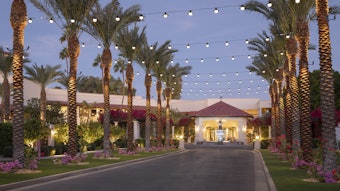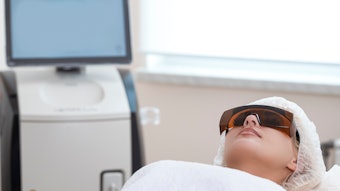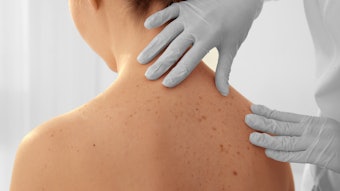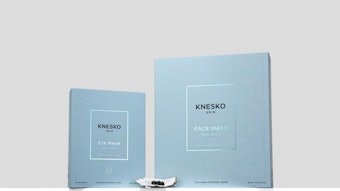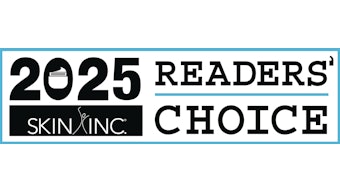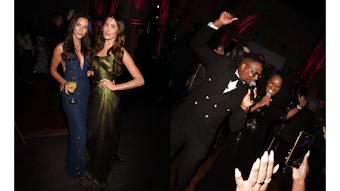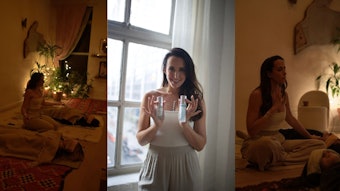The pursuit of eternal youth has become a global preoccupation with consumers spending more and more money—and some even going to extreme lengths—in effort to turn back the clock on maturing skin. Once only found in the medicine chests of women in their 50s and 60s, antiagers are increasingly appealing to a younger audience keen to put the brakes on the aging process. Not even men are immune to the promise of eternal youth, as antiaging creams have become an important contributor to growth in the burgeoning $1.5 billion men’s skin care segment.
Asia-Pacific Lags Behind
While the antiaging trend is a global phenomenon, the drive to maintain a youthful appearance is strongest in the affluent Western markets of North America, Western Europe and Australasia—which spent a combined $7.7 billion on wrinkle-reducing facial creams in 2007, according to Euromonitor International’s new 2008 cosmetics and toiletries database. Antiaging facial creams are also enjoying booming demand in Latin America, where consumers put a high priority on looks, and the market saw growth of 15%
in 2007 to $5.5 billion. In Brazil, more than one in every three U.S. dollars spent on skin care goes toward a facial antiager.
Eastern Europe has a relatively underdeveloped antiaging market, but as economic fortunes in the region rise, so does interest in age-delaying beauty care, and sales of facial antiagers nearly tripled 2002–2007 to $3.9 billion, according to new Euromonitor International figures.
While skin care is a beauty priority in many Asian markets (four of the six biggest per capita spenders on skin care are in this region), antiaging is seen as less important than skin whitening and standard cleansing, toning and moisturizing products. At ¥1.5 trillion ($13.1 billion), Japan is the largest skin care market in the world, but less than 10% of spending is accounted for by antiagers. In the U.S. and U.K., the figure is closer to 30%. However, China, India, Vietnam, Thailand and Indonesia are seen as important new growth areas for the antiaging market as international beauty trends filter into these booming new economies.
Youthfulness: A Beauty Priority
A growing appearance-consciousness among consumers is fueling dynamism in the antiaging market globally. People are under a great deal of pressure to look good all the time, something that is being instigated by a mass media that often promotes an unrealistic archetype of beauty. Healthier lifestyles, too, mean that, as they grow older, consumers are increasingly feeling more youthful than their actual age would suggest, and antiagers are seen as a way to ensure that one’s outer appearance reflects this inner youthfulness.
The market is also benefiting from manufacturers’ attempts to broaden the consumer base for antiagers. The growth in products designed to prevent the skin from aging, rather than those that claim to turn back the clock on more mature skin, has attracted consumers in their 30s and 40s to the market. Men’s antiagers has also become a small but vibrant segment.
It is not only volume sales that are on the rise, however; value sales are also achieving strong growth. Efficacy is of prime importance in this market, and price is seen as a key determinant of quality. Premium brands do well in the antiaging segment, and five of the leading 10 global brands are prestige labels—including Estée Lauder, Lancôme and Shiseido.
Increasingly, too, consumers are trading up to exclusive, niche antiaging brands such as Crème de la Mer—which can cost well in excess of $200 for a 50 mL pot. RéVive Peau Magnifique retails for $1,500 for four 1 mL vials of antiaging serum—about double the average price of a single Botox treatment. Even mass brands are contributing to unit price rises, with labels such as Olay offering products at a price not far below those of premium alternatives such as Clinique.
Advanced Ingredients
The emergence of advanced cosmeceutical brands is one of the key developments to come out of the demand for progressively more efficacious antiagers. A cosmeceutical is a product that is marketed as a cosmetic but reputedly contains biologically active ingredients and claims to have drug-like benefits. Some of the ingredients that have become big sellers in the antiaging market as a result of this trend include retinoids (some of which are so powerful, products containing them are actually classified as medicines), alpha-hydroxy acids (which strip the skin of the dead outer layers to reveal the fresher skin underneath) and collagen-promoting peptides. As cosmeceuticals gain momentum in the antiaging market, the variety of ingredients used and range of skin aging problems they claim to solve are multiplying fast.
Antiagers that purportedly offer transdermal delivery of skin plumping ingredients such as collagen are among the more recent developments in the cosmeceuticals market. Other products claim to replicate the effects of professional antiwrinkle products such as Botox. Tri-Aktiline is one such product. Recently launched in the U.K. and sold via the online store of health and beauty chain Boots, Tri-Aktiline’s key ingredient is gatuline, an extract from the South American Acmella oleracea plant, which supposedly relaxes facial muscles.
The most advanced, and controversial, antiaging cosmeceutical to come onto the market to date uses stem cell technology. Voss Laboratories was the first company to explore the potential of skin cells in the antiaging market. The resulting product, Amatokin, claims to transform aging skin from the inside by stimulating the generation of new skin cells while repairing DNA. It did not take long for other brands to pick up on the technology, and Dior Capture R60/80 XP and RéVive’s Peau Magnifique are two further examples of stem cell wrinkle creams.
At-home Treatments
Another trend in cosmeceutical antiagers brings beauty treatments to the at-home market—notably in the form of laser skin rejuvenating devices. Johnson & Johnson and, more recently, L’Oréal have announced plans to develop light-based antiaging devices, and Procter & Gamble joined forces with Israeli-based Syneron in 2007 to sell skin care products to be used in conjunction with proprietary Intense Pulse Light technology direct to the consumer. The trend is even attracting manufacturers from beyond the cosmetics market, and Philips is said to be developing its own versions of electric antiaging products.
Other brands seek to complement the cosmetic surgery market by offering post-operative formulations. La Prairie’s Cellular Nurturing range, aiming to relieve the redness and tightness often experienced after surgery, is one example. Estée Lauder’s Clinique brand has taken this trend one step further, teaming up with Botox creator Allergan to offer a range of skin care products to complement in-office esthetic procedures and to be sold exclusively through U.S. physicians’ offices. As growing numbers of consumers resort to cosmetic surgery and treatments in the pursuit of younger-looking skin, this approach is expected to gain momentum going forward. Estimates suggest plastic surgery will rise to be a £1.8 billion business in the U.K. alone by 2011.
To continue reading this article, please click here. You will be redirected to GCI magazine's Web site.
Asia-Pacific Lags Behind
While the antiaging trend is a global phenomenon, the drive to maintain a youthful appearance is strongest in the affluent Western markets of North America, Western Europe and Australasia—which spent a combined $7.7 billion on wrinkle-reducing facial creams in 2007, according to Euromonitor International’s new 2008 cosmetics and toiletries database. Antiaging facial creams are also enjoying booming demand in Latin America, where consumers put a high priority on looks, and the market saw growth of 15%
in 2007 to $5.5 billion. In Brazil, more than one in every three U.S. dollars spent on skin care goes toward a facial antiager.
Eastern Europe has a relatively underdeveloped antiaging market, but as economic fortunes in the region rise, so does interest in age-delaying beauty care, and sales of facial antiagers nearly tripled 2002–2007 to $3.9 billion, according to new Euromonitor International figures.
While skin care is a beauty priority in many Asian markets (four of the six biggest per capita spenders on skin care are in this region), antiaging is seen as less important than skin whitening and standard cleansing, toning and moisturizing products. At ¥1.5 trillion ($13.1 billion), Japan is the largest skin care market in the world, but less than 10% of spending is accounted for by antiagers. In the U.S. and U.K., the figure is closer to 30%. However, China, India, Vietnam, Thailand and Indonesia are seen as important new growth areas for the antiaging market as international beauty trends filter into these booming new economies.
Youthfulness: A Beauty Priority
A growing appearance-consciousness among consumers is fueling dynamism in the antiaging market globally. People are under a great deal of pressure to look good all the time, something that is being instigated by a mass media that often promotes an unrealistic archetype of beauty. Healthier lifestyles, too, mean that, as they grow older, consumers are increasingly feeling more youthful than their actual age would suggest, and antiagers are seen as a way to ensure that one’s outer appearance reflects this inner youthfulness.
The market is also benefiting from manufacturers’ attempts to broaden the consumer base for antiagers. The growth in products designed to prevent the skin from aging, rather than those that claim to turn back the clock on more mature skin, has attracted consumers in their 30s and 40s to the market. Men’s antiagers has also become a small but vibrant segment.
It is not only volume sales that are on the rise, however; value sales are also achieving strong growth. Efficacy is of prime importance in this market, and price is seen as a key determinant of quality. Premium brands do well in the antiaging segment, and five of the leading 10 global brands are prestige labels—including Estée Lauder, Lancôme and Shiseido.
Increasingly, too, consumers are trading up to exclusive, niche antiaging brands such as Crème de la Mer—which can cost well in excess of $200 for a 50 mL pot. RéVive Peau Magnifique retails for $1,500 for four 1 mL vials of antiaging serum—about double the average price of a single Botox treatment. Even mass brands are contributing to unit price rises, with labels such as Olay offering products at a price not far below those of premium alternatives such as Clinique.
Advanced Ingredients
The emergence of advanced cosmeceutical brands is one of the key developments to come out of the demand for progressively more efficacious antiagers. A cosmeceutical is a product that is marketed as a cosmetic but reputedly contains biologically active ingredients and claims to have drug-like benefits. Some of the ingredients that have become big sellers in the antiaging market as a result of this trend include retinoids (some of which are so powerful, products containing them are actually classified as medicines), alpha-hydroxy acids (which strip the skin of the dead outer layers to reveal the fresher skin underneath) and collagen-promoting peptides. As cosmeceuticals gain momentum in the antiaging market, the variety of ingredients used and range of skin aging problems they claim to solve are multiplying fast.
Antiagers that purportedly offer transdermal delivery of skin plumping ingredients such as collagen are among the more recent developments in the cosmeceuticals market. Other products claim to replicate the effects of professional antiwrinkle products such as Botox. Tri-Aktiline is one such product. Recently launched in the U.K. and sold via the online store of health and beauty chain Boots, Tri-Aktiline’s key ingredient is gatuline, an extract from the South American Acmella oleracea plant, which supposedly relaxes facial muscles.
The most advanced, and controversial, antiaging cosmeceutical to come onto the market to date uses stem cell technology. Voss Laboratories was the first company to explore the potential of skin cells in the antiaging market. The resulting product, Amatokin, claims to transform aging skin from the inside by stimulating the generation of new skin cells while repairing DNA. It did not take long for other brands to pick up on the technology, and Dior Capture R60/80 XP and RéVive’s Peau Magnifique are two further examples of stem cell wrinkle creams.
At-home Treatments
Another trend in cosmeceutical antiagers brings beauty treatments to the at-home market—notably in the form of laser skin rejuvenating devices. Johnson & Johnson and, more recently, L’Oréal have announced plans to develop light-based antiaging devices, and Procter & Gamble joined forces with Israeli-based Syneron in 2007 to sell skin care products to be used in conjunction with proprietary Intense Pulse Light technology direct to the consumer. The trend is even attracting manufacturers from beyond the cosmetics market, and Philips is said to be developing its own versions of electric antiaging products.
Other brands seek to complement the cosmetic surgery market by offering post-operative formulations. La Prairie’s Cellular Nurturing range, aiming to relieve the redness and tightness often experienced after surgery, is one example. Estée Lauder’s Clinique brand has taken this trend one step further, teaming up with Botox creator Allergan to offer a range of skin care products to complement in-office esthetic procedures and to be sold exclusively through U.S. physicians’ offices. As growing numbers of consumers resort to cosmetic surgery and treatments in the pursuit of younger-looking skin, this approach is expected to gain momentum going forward. Estimates suggest plastic surgery will rise to be a £1.8 billion business in the U.K. alone by 2011.
To continue reading this article, please click here. You will be redirected to GCI magazine's Web site.


